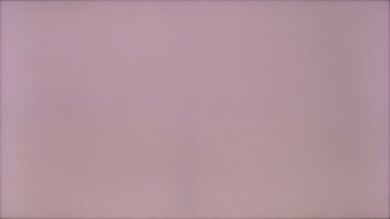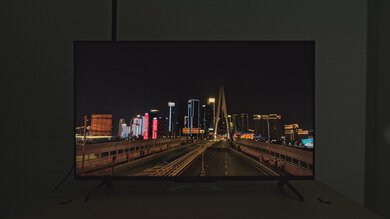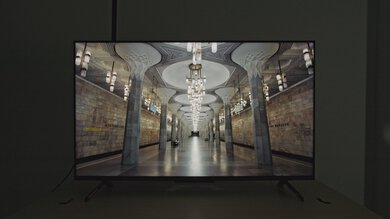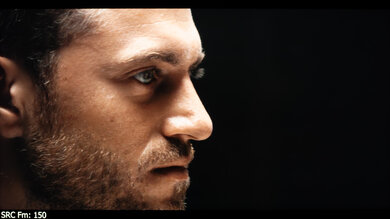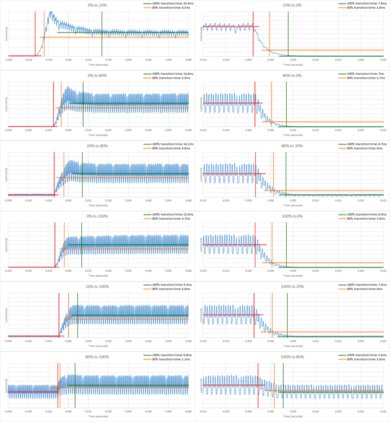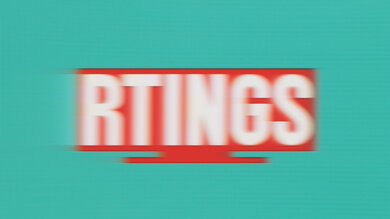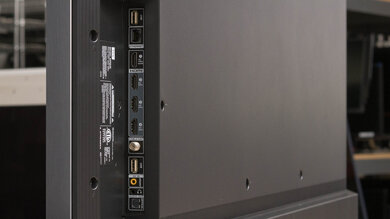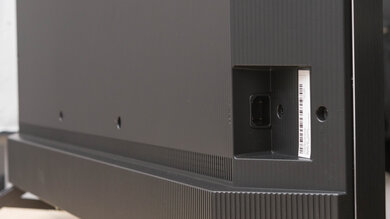The TCL 6 Series/R646 2021 QLED is a mid-range 4k TV with Mini LED backlighting released in 2021. It sits alongside the TCL 6 Series/R655 2022 QLED as part of the 6 Series lineup, with one of the differences being that the R646 has Google TV while the R655 uses Roku TV. It's a feature-rich TV with advanced gaming features like variable refresh rate (VRR) support and two HDMI 2.1 bandwidth inputs, and it's designed to take full advantage of the Xbox Series X and PS5.
Our Verdict
The TCL R646 is excellent for most uses. It's impressive for watching movies in a dark room thanks to its fantastic contrast ratio, and it has a Mini LED local dimming feature to improve dynamic range. It's great for watching TV shows or sports in a bright room because it has fantastic peak brightness and excellent reflection handling, but it has narrow viewing angles. It's also an impressive TV for gaming thanks its variable refresh rate support, HDMI 2.1 bandwidth for 4k @ 120Hz gaming, and low input lag. Lastly, it's impressive for watching HDR content because it displays a wide color gamut and gets bright enough to make highlights pop.
- Fantastic contrast for deep blacks.
- Good black uniformity with minimal blooming.
- Automatically removes 24p judder from any source.
- High peak brightness in SDR and HDR.
- Excellent reflection handling, so glare isn't distracting.
- HDMI 2.1 bandwidth on two inputs.
- Some black smearing with fast-moving content.
The TCL R646 is great for watching TV shows in bright rooms. It gets bright enough to fight glare and has excellent reflection handling, so glare isn't distracting even if you're in a bright room. The Google TV smart interface has a ton of apps available to download. Sadly, it has a narrow viewing angle, so it's not ideal for a wide seating arrangement, or if you like to move around with the TV on, as the image degrades from the sides.
- Good black uniformity with minimal blooming.
- Automatically removes 24p judder from any source.
- No problem displaying 720p, 1080, or 4k content.
- High peak brightness in SDR and HDR.
- Excellent reflection handling, so glare isn't distracting.
- Narrow viewing angle.
The TCL R646 is great for watching sports in a well-lit environment. Thanks to its excellent reflection handling and fantastic peak brightness, visibility isn't an issue even in the brightest of rooms. It has a great response time, so fast action scenes are clear and it's easy to see what's going on. Unfortunately, it's not a good choice for watching sports with a large group of friends because it has a narrow viewing angle, so only the people sitting directly in front of the TV will enjoy the best image.
- Good black uniformity with minimal blooming.
- Automatically removes 24p judder from any source.
- No problem displaying 720p, 1080, or 4k content.
- High peak brightness in SDR and HDR.
- Excellent reflection handling, so glare isn't distracting.
- Narrow viewing angle.
- Some black smearing with fast-moving content.
The TCL R646 is excellent for gaming. It has a 120Hz panel with HDMI 2.1 bandwidth, so you can take full advantage of the PS5 and Xbox Series X. It has variable refresh rate support to reduce screen tearing, and the input lag is incredibly low, so your actions are in-sync with the action on the screen. It has a quick overall response time, but there's black smearing with fast-moving objects in dark scenes. It's excellent for dark room gaming because it has high contrast
- Fantastic contrast for deep blacks.
- Good black uniformity with minimal blooming.
- Automatically removes 24p judder from any source.
- HDMI 2.1 bandwidth on two inputs.
- Low input lag for responsive gaming.
- Variable refresh rate support.
- Some black smearing with fast-moving content.
The TCL R646 is impressive for watching HDR movies. It has a high native contrast ratio and a Mini LED backlight feature to improve the dynamic range in HDR content. It displays a wide color gamut, and it gets bright enough to make highlights pop. It supports Dolby Vision and HDR10+, so you'll enjoy the best HDR experience possible regardless of the source.
- Fantastic contrast for deep blacks.
- Good black uniformity with minimal blooming.
- Automatically removes 24p judder from any source.
- High peak brightness in SDR and HDR.
- Displays wide color gamut.
The TCL R646 is excellent for HDR gaming. It has a bunch of gaming features like HDMI 2.1 bandwidth and variable refresh rate support to reduce screen tearing. It has low input lag and a quick response time, but there's some smearing behind dark areas of the screen. HDR content looks great because it gets bright enough to make highlights pop, displays a wide color gamut, and has high contrast.
- Fantastic contrast for deep blacks.
- Good black uniformity with minimal blooming.
- Automatically removes 24p judder from any source.
- High peak brightness in SDR and HDR.
- HDMI 2.1 bandwidth on two inputs.
- Variable refresh rate support.
- Some black smearing with fast-moving content.
The TCL R646 is great to use as a PC monitor. It has a low input lag for a responsive desktop experience, and it has a quick response time, but there's some blur behind dark areas of the screen in fast motion. Glare isn't an issue in well-lit rooms because it gets bright enough to combat glare and has excellent reflection handling. It displays chroma 4:4:4 properly with 1080p and 4k signals at 60Hz, which is essential for clear text from a PC. Sadly, it has a narrow viewing angle, so the sides of the screen appear non-uniform if you're sitting up close.
- Good black uniformity with minimal blooming.
- Automatically removes 24p judder from any source.
- No problem displaying 720p, 1080, or 4k content.
- High peak brightness in SDR and HDR.
- Excellent reflection handling, so glare isn't distracting.
- HDMI 2.1 bandwidth on two inputs.
- Chroma 4:4:4 signals are displayed properly for clear text from a PC.
- Narrow viewing angle.
- Some black smearing with fast-moving content.
Changelog
- Updated Sep 26, 2025: We uploaded the latest brightness measurements and uniformity photos for the Accelerated Longevity Test.
- Updated Jul 08, 2025: We uploaded the latest brightness measurements and uniformity photos for the Accelerated Longevity Test.
- Updated Apr 17, 2025: We uploaded the latest brightness measurements and uniformity photos for the Accelerated Longevity Test.
- Updated Feb 11, 2025: We uploaded the latest brightness measurements and uniformity photos for the Accelerated Longevity Test.
Check Price
Differences Between Sizes And Variants
We bought and tested the 55-inch TCL R646, and these results are also valid for the 65-inch and 75-inch models. This model is a 4k TV with Google as its smart platform, and it's part of the 6 Series lineup that includes the TCL 6 Series/R648 2021 8k QLED and the TCL 6 Series/R635 2020 QLED both of which include Roku TV.
| Size | US Model | Canada Model |
|---|---|---|
| 55" | 55R646 | 55R646-CA |
| 65" | 65R646 | 65R646-CA |
| 75" | 75R646 | 75R646-CA |
The unit we bought was manufactured in July 2021. You can see the full label for our unit here.
Popular TV Comparisons
The TCL R646 is a great 4k TV with quantum dot technology and Mini LED backlighting that doesn't cost as much as Samsung TVs with those features. The inclusion of Google TV is a nice addition for those who aren't a fan of Roku, and it has a great selection of gaming features.
Also see our recommendations for the best smart TVs, the best TVs for Xbox Series X, and the best TVs for movies.
The LG C1 OLED is much better than the TCL 6 Series/R646 2021 QLED. The LG has a near-infinite contrast ratio, resulting in deep inky blacks in a dark room with no distracting blooming around bright objects. The LG also has much better motion handling than the TCL because it has a near-instantaneous response time. The TCL gets a lot brighter in SDR, meaning it can handle more glare. However, it has worse picture quality overall.
The TCL R635 and the TCL 6 Series/R646 2021 QLED sit alongside each other in the TCL 6 Series lineup. The R646 was released a year after the R635, so it improves in a few areas. The main difference is that the R646 has much better local dimming as there's less blooming around bright objects, but it doesn't deliver as deep blacks with local dimming enabled. The R646 also has two HDMI 2.1 inputs, which the R635 doesn't have, meaning you can use it for 4k gaming up to 120 fps. They each have different smart systems, with the R646 using Google TV and the R635 using Roku.
The Samsung QN85A and the TCL 6 Series/R646 2021 QLED are both great TVs, and the best one for you depends on your specific viewing conditions. The TCL has much deeper blacks, resulting in significantly better picture quality in a dark room, with less blooming around bright objects and very little clouding in dark scenes. The Samsung gets brighter and has improved reflection handling, so it's a better choice for well-lit rooms.
The TCL 6 Series/R655 2022 QLED is slightly better than the TCL 6 Series/R646 2021 QLED. HDR content looks better on the R655 thanks to its higher peak brightness and better gradient handling. The R655 is also better for gaming thanks to its higher refresh rate, and its variable refresh rate feature works better at low frame rates.

We buy and test dozens of TVs yearly, taking an objective, data-driven approach to deliver results you can trust. Our testing process is complex, with hundreds of individual tests that take over a week to complete. Most of our tests are done with specially designed test patterns that mimic real content, but we also use the same sources you have at home to ensure our results match the real-world experience. We use two main tools for our testing: a Colorimetry Research CR-100 colorimeter and a CR-250 spectroradiometer.
Test Results

The TCL R646 looks similar to the TCL 6 Series/R635 2020 QLED as it has a silver bottom bezel and the same back panel, but there are a few tweaks. This TV uses different feet that have a more premium feel, and the Google speaker sticks out at the bottom.
Update 08/09/2023: After running on the longevity test for eight months, this TV is now showing signs of image retention or potentially burn-in. It's not visible in most real content, but in near-dark scenes, like this 5% gray uniformity slide, the CNN logo, breaking news banner, and even some text is clearly visible. It's an unexpected result for this type of TV panel. We're looking into it more to determine the nature of the image retention.
Update 02/06/2023: Unfortunately, the brightness of this TV has started to drop after running for two months on our accelerated longevity test.
The TCL R646 features new metal feet that don't take up as much space as those on the TCL 6 Series/R635 2020 QLED. They support the TV well, and there's minimal wobble. There are 3.5 inches from the table to the bottom of the screen so almost all soundbars fit in front of the TV without blocking the screen.
Footprint of the 55-inch TV: 40.35" x 12.48"
The back is entirely plastic, with a glossy top portion that attracts fingerprints easily and a textured bottom half that houses the TV's electronics and inputs. The inputs face to the side, and they're close to one side of the TV, so they're easily accessible even when the TV is wall mounted. There are vents on top of the textured section for airflow. Each of the feet have flaps that you can use for cable management.
It has good build quality, and it feels very similar to the TCL 6 Series/R635 2020 QLED. It's well put together, and it feels sturdy for the most part. The feet are good, as there's almost no wobble. However, the plastic on the back flexes quite easily, and it's noticeable with both the glossy top and the textured bottom.
Overall, the lighting zone transitions aren't very noticeable. The TV's processing keeps up well with fast-moving objects, so there's almost no noticeable trailing halo effect.
The TCL R646 has impressive HDR peak brightness. It doesn't get much brighter than in SDR, but bright highlights stand out well in HDR.
These measurements are after calibrating the HDR white point, with the following settings:
- Picture Mode: Movie
- Brightness: Max
- Local Contrast: Low
- Contrast: Max
- Color Temperature: Warm -5
The HDR brightness in Game Mode is excellent. There's no noticeable difference in peak brightness when you start playing a game.
These measurements are with the following settings:
- Picture Mode: Game
- Brightness: Max
- Local Contrast: Low
- Contrast: Max
- Color Temperature: Warm -5
This TV tracks the PQ EOTF well, ensuring most HDR content is displayed at the brightness level intended by the content creator. Interestingly, the TV tracks the EOTF differently depending on the content. Content mastered at 600 nits is brighter than it should be, especially in midtones, and there's a very sharp cutoff at the TV's peak brightness, with no tone mapping. Only content mastered at 4,000 nits shows any signs of tone mapping, and even then it's very minor, so almost all content loses fine details in bright scenes.
The SDR brightness is fantastic, so glare isn't an issue even in very bright rooms. Brightness varies a bit between scenes, but it's not noticeable with most content.
These measurements are after calibration with the following settings:
- Picture Mode: Movie
- Brightness: Max
- Local Contrast: Low
- Contrast: Max
- Gamma: 2.2
- Color Temperature: Warm -5
This TV has a great color gamut for HDR content. It has fantastic coverage of the commonly-used DCI P3 color space, and tone mapping is good, too, so colors look accurate. Coverage of the wider Rec. 2020 is more limited, but it's still decent.
The color volume is good. Thanks to its high peak brightness, it displays bright colors well.
The TCL 55R646 has good accuracy before calibration. Most colors are only slightly inaccurate, and the color temperature is close to the 6500K target. However, white balance is off, which affects shades of gray, and gamma doesn't follow the 2.2 target well, so most scenes are darker than they should be.
The accuracy after calibration is fantastic. Color accuracy and the color temperature improved, and the white balance is much better too. Gamma is perfect for most scenes, but some really bright scenes are a bit too dark.
See our full calibration settings here.
The reflection handling is excellent, and it's much better than the TCL 6 Series/R635 2020 QLED. It does a much better job at absorbing light, so combined with the high peak brightness, glare isn't an issue even in very bright rooms.
This TV has excellent gradient handling in HDR. There's a bit of banding in very dark grays, but other than that there are hardly any noticeable issues.
Like most TVs on the market, this TV uses a BGR (Blue-Green-Red) subpixel layout instead of the traditional Red-Green-Blue layout. For video content, it doesn't cause any issues, but if you're planning on using this TV as a PC monitor, this reduces text clarity a bit, although there are easy workarounds for it. You can read about it here.
There's an optional backlight strobing feature, commonly known as black frame insertion. It only flickers at 120Hz and it creates noticeable image duplication, but it doesn't dim the screen much.
Due to the quick response time, there's some stutter with lower-frame rate content because each frame holds on for longer.
This TV automatically removes 24p judder from any source ensuring a smooth movie-watching experience.
This TV supports variable refresh rate technology with both FreeSync and HDMI Forum VRR sources, including the Xbox Series X and the PS5. Unfortunately, despite its high max refresh rate, low framerate compensation (LFC) doesn't appear to work properly with any source, so there's tearing at low frame rates.
The TCL R646 has very low input lag in Game Mode, ensuring a smooth gaming experience with very little delay between your actions and the image on the TV.
The TCL R646 supports any resolution up to 4k @ 120Hz. It displays chroma 4:4:4 properly with 1080p and 4k signals at 60Hz, which is essential for clear text from a PC. It accepts a 4k @ 120Hz signal in 10 or 12-bit color depth with chroma 4:4:4, but it has the same problem as many other 2021 models, as 4k @ 120Hz isn't displayed properly.
Thanks to its high bandwidth HDMI ports, this TV can take full advantage of the PS5. It also supports Auto Low Latency Mode, so you don't have to worry about switching to 'Game' mode for the lowest input lag when you start gaming.
The Composite In input needs an adapter, but it doesn't come with one.
The TCL 6 Series Google TV supports eARC, allowing you to pass DTS:X and Dolby Atmos audio formats to a compatible receiver using a single HDMI connection. During our testing, our receiver wasn't properly playing the Dolby Atmos audio file, but the Dolby Atmos logo popped up on the TV. This is likely an issue on our end, and we expect it to work for most people. Since TCL advertises the Dolby Atmos support, we list it as 'Yes', but if you experience the same issue, let us know.
The frequency response is decent. It's similar to the TCL 6 Series/R635 2020 QLED, but it gets louder and has a bit higher deviation, but the sound profile is still well-balanced. It has decent bass, but it's still nothing like a dedicated subwoofer.
The distortion performance is great. Even at the max volume, there's hardly any distortion.
Unlike the TCL 6 Series/R655 2022 QLED, which runs the Roku TV smart interface, the TCL R646 comes with Google TV. TCL uses its own implementation of Google TV, so the settings menu is different than on Sony and Hisense TVs. It may take some time to get used to, but menu navigation feels very smooth.
There are ads on the home page, but we couldn't get a photo of them during testing because they pop in and out, and they're not always there.
The remote is rather simplistic. There's a built-in mic for voice control, and you can ask it to change inputs, open apps, and search for content. However, you can't ask it to change settings. There's also a built-in mic in front of the TV that you can use for the Google Assistant feature.


